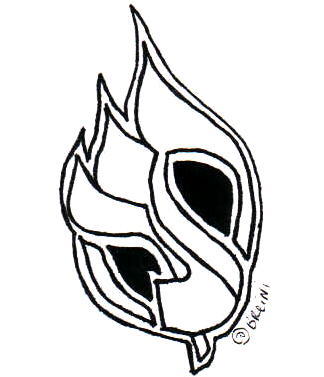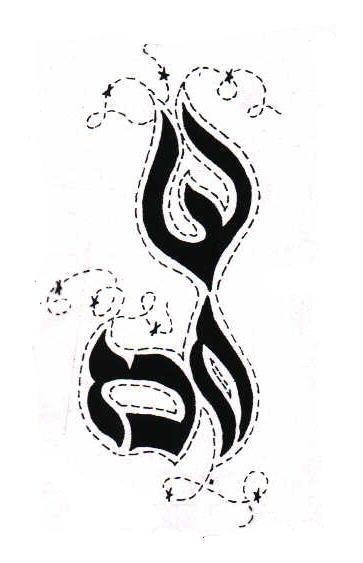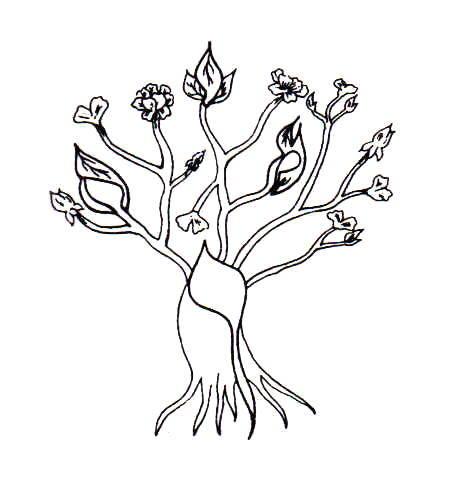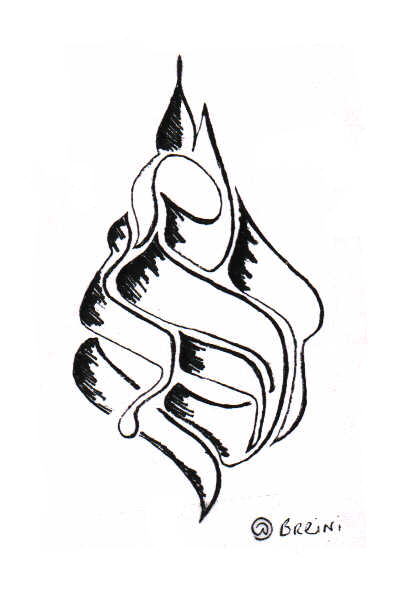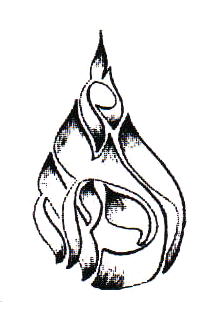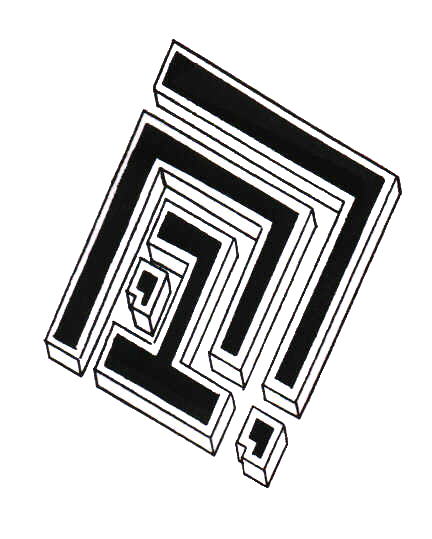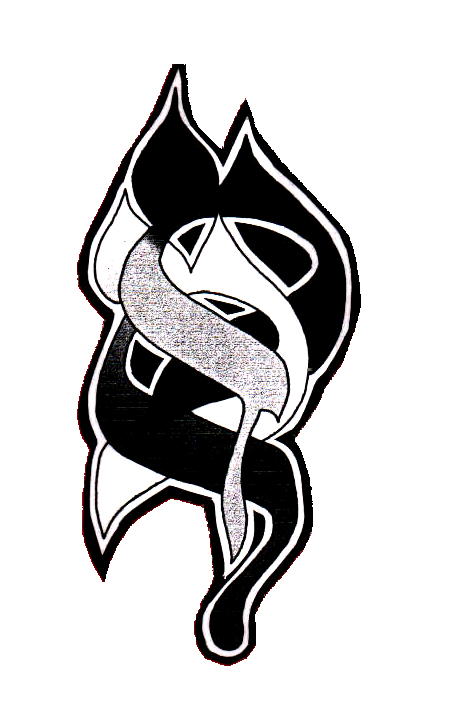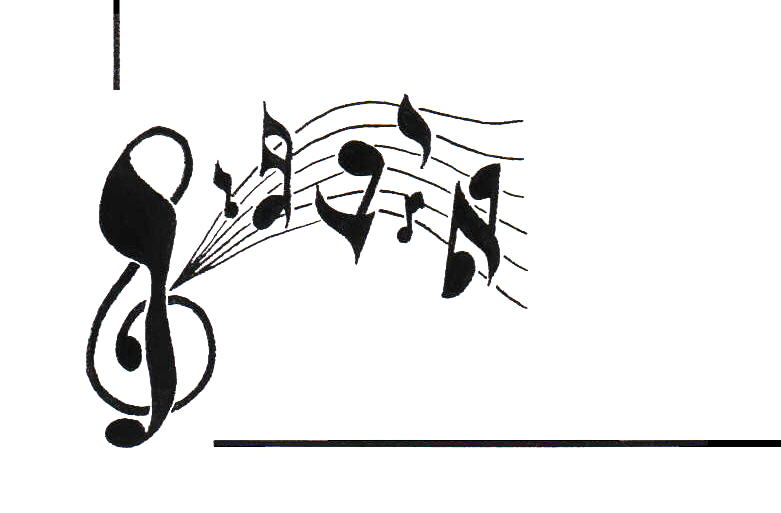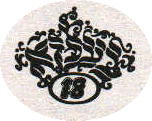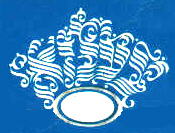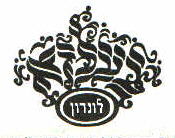 SUPPORTING ISRAEL WHERE JEWS ARE REBUILDING THEIR OFT-INVADED ANCESTRAL HOMELAND
SUPPORTING ISRAEL WHERE JEWS ARE REBUILDING THEIR OFT-INVADED ANCESTRAL HOMELAND 
| Click here for | exit | top Alphabet Tablets Magen Davids Menorahs end |
|
Making The Alphabet Dance or Ingenious Hebrew Letter Forms Document URL: http://www.nationalfinder.com/heblet/index.htm
Compiled by Roger Harris © 1999-2005
The Hebrew alphabet is written and printed in many forms. Hebrew letters intended for a Sefer Torah scroll, or for mezuzah or tefilin scrolls, are subject to the most stringent conditions regarding their shape and the manner in which they are written. In contrast, this page contains a listing of light-hearted examples of Hebrew letters which have been formed into motifs and patterns. They are taken from advertisements in newspapers and magazines and from wedding, bar mitzvah and simchah invitations. Some of the examples bear wine stains and I have not tried to remove them from the digital images; like the wine stains in a treasured haggadah, they are a reminder of happy times. My thanks go to ...
Inevitably, once I had begun to compile a list of attractive alphabet forms, I found examples
of the Tablets of the Law, Magen David and the menorah. They are listed at the end of the alphabet section.
|
| Click here for | exit | top Alphabet Tablets Magen Davids Menorahs end |
Making The Alphabet Dance
These designs are also known as monograms.
|
|||||||||||||
Examples of work by other designers |
|||||||||||||

1 The flower contains 'nun yud' (Nechamah Yael) and 'mem zayin' (Menachem Ziev). The leaves contain the words 'mazel tov.' |
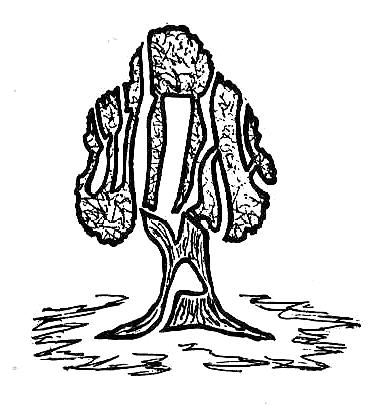
2 The tree's canopy contains 'aleph chet shin' and the trunk contains 'mem.' |
||||||||||||
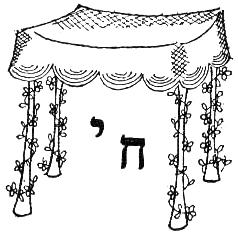
3 From the wedding invitation of Helene and Jul in 1972. |
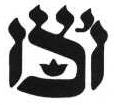
4 British WIZO |
||||||||||||
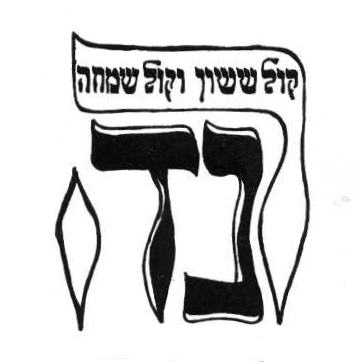
5 From the wedding invitation of Naomi and David, 21st Av 5736. |
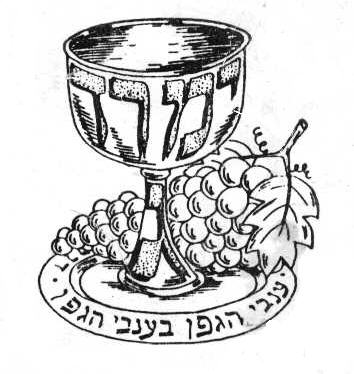
6 Yud mem resh dalet on the bowl, gimel on the stem: Yehuda M. v'Rivkah Dina G. |
||||||||||||
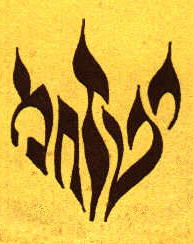
7 Yud tet zayin chet mem |

8 Yeshiva Yad Halevi: above:yud dalet; below: hei lamed vov yud. Vowel points appear to be included. The water jug alludes to the Levite's function of providing washing facilities for the Cohanim in the Temple. Source: Jewish Tribune, 20 March 1997, page 12. |
||||||||||||
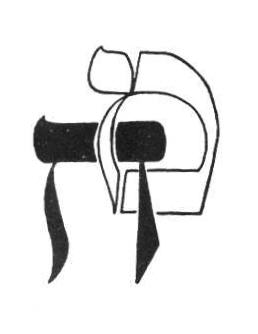
9 Mem chet |
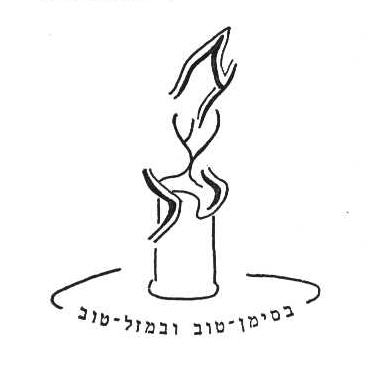
10 The image contains 'yud bet' for Yitzchak B and 'resh shin' for Rachel Sara. From a wedding invitation. |
||||||||||||
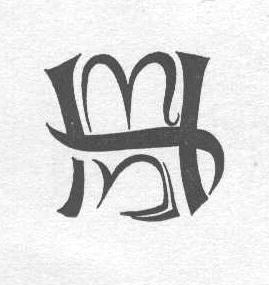
11 From the Bar Mitzvah invitation of Meir Heller, 1973 |
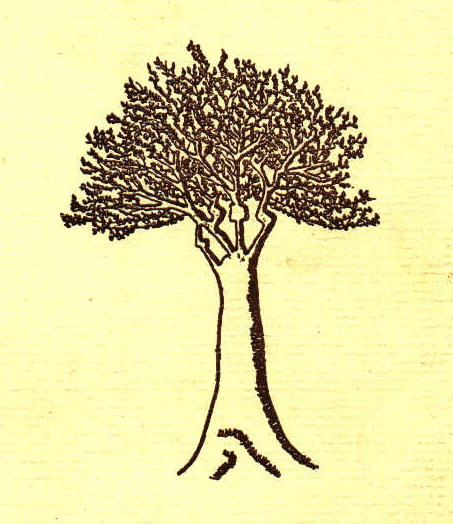

12 From the wedding invitation of Shmuel and Elisheva. The 'shin and aleph' appear at the top of the tree trunk. The left stem of the shin has been augmented to form an aleph. |
||||||||||||
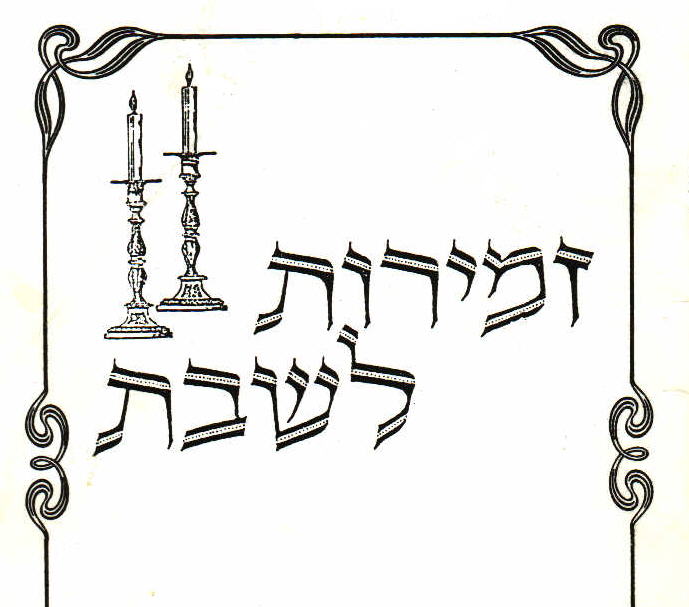
13 The letters have a rhythmic life of their own. |
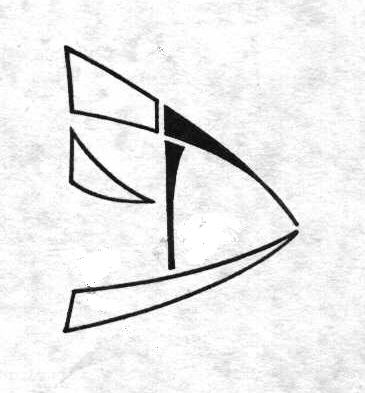
14 Pei |
||||||||||||
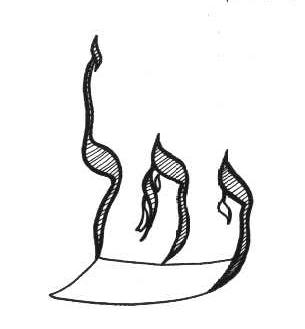
15 The pei, chet and lamed may, with the horizontal shape, possibly form a shin. The left vertical line of the chet resembles an intertwined havdala candle and may have additional significance. |
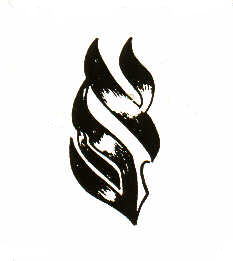
16 The motif contains 'aleph, dalet and pei' |
||||||||||||
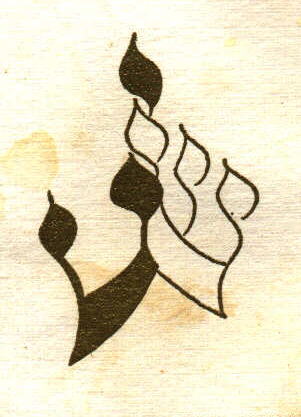
17 Shin, yud and ayin. |
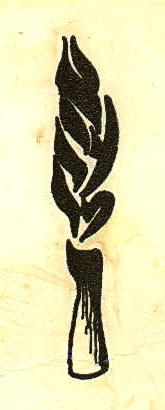
18 This congested design may represent a candle and flame or a flower. An aleph is at the top and a lamed at the right-middle. The lower half appears to contain a yud or a vov. |
||||||||||||
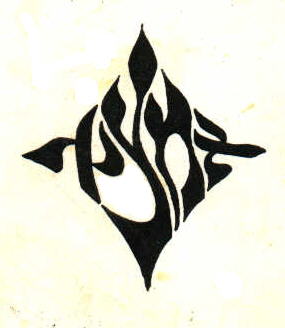
19 The motif contains the initials of Eleazar Tsoker (aleph tzaddi) on the left, read from left to right, and Esther Malka (aleph mem) on the right, read from right to left. |
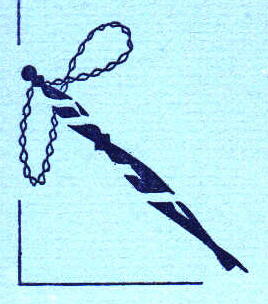
20 In what look like reflections along the length of the yad from the top may be found the initials of Baruch Yehuda Dizilavsky (bet yud dalet). |
||||||||||||
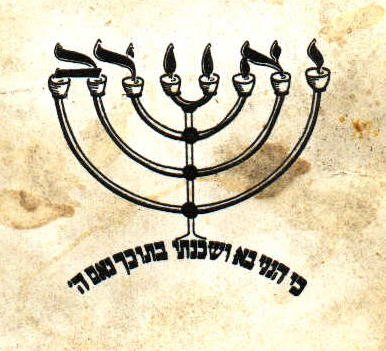
21 The lights of the menorah carry the letters yud, aleph, vov, vov, aleph-lamed and bet. |
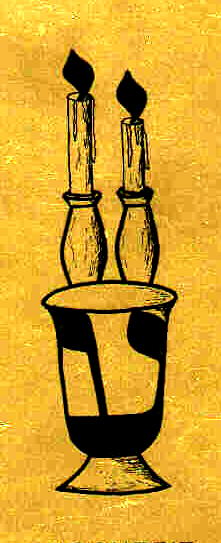
22 Yud, yud, ayin. |
||||||||||||
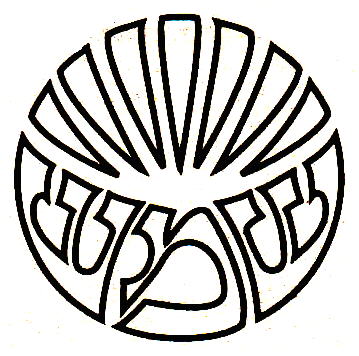
23 Camp Shemesh Source: Jewish Express, 6 February 1998, page 26 |
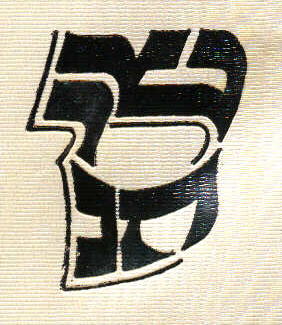
24 |
||||||||||||
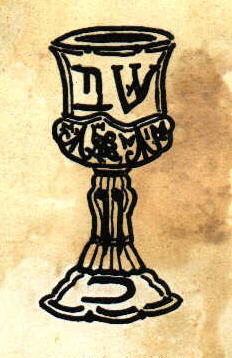
25 Shin pei on the upper part of the bowl, vov vov on the stem, caf on the base. The characters on the lower part of the bowl could not be recognised. |
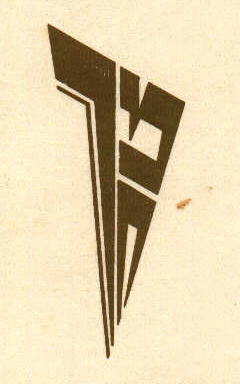
26 Chani and Michael R. |
||||||||||||
27 Belzer Yeshiva, London. |
|||||||||||||
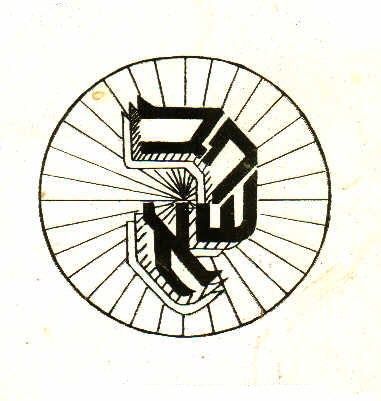
28 Reading clockwise: bet, chet, shin, aleph. |

29 Milka Michl Daniel |
||||||||||||

30 Chet, aleph, bet and resh. Perhaps the falling winedrops are yuds. |
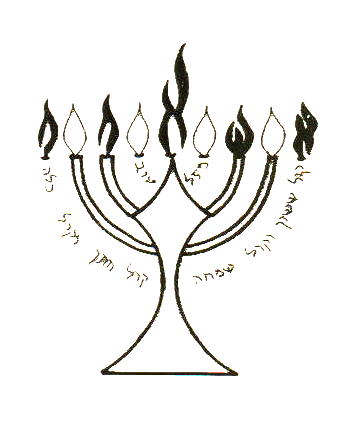
31 Aleph, shin, aleph, chet, chet. The innermost and outermost branches of the menorah are represented by handwritten text. |
||||||||||||
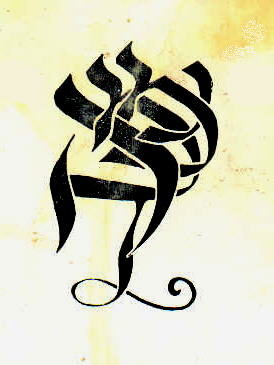
32 Mem, mem, hei. |
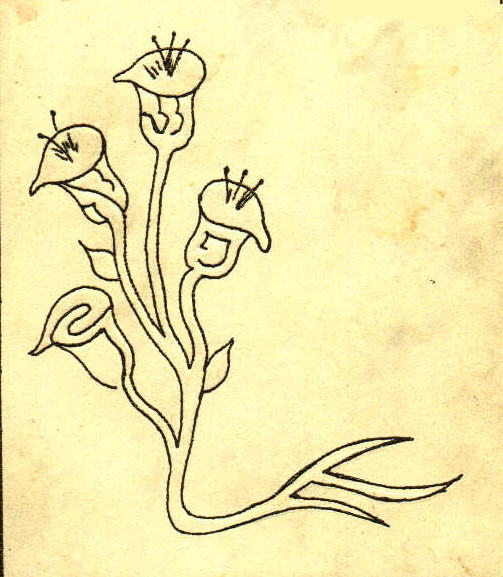
33 |
||||||||||||
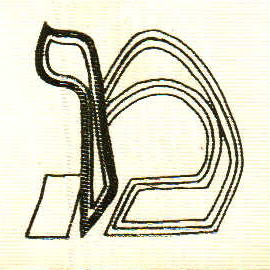
34 Mem, vov. |
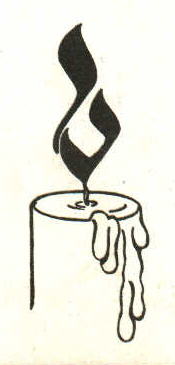
35 Bet resh or caf resh. |
||||||||||||
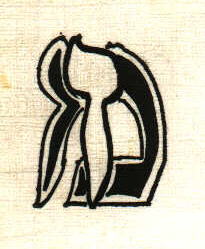
36 Mem zayin. |
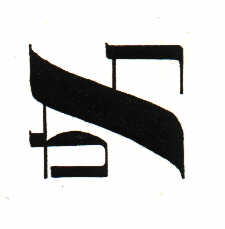
37 Chet, aleph, mem. |
||||||||||||
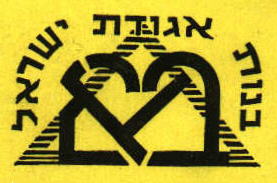
38 |
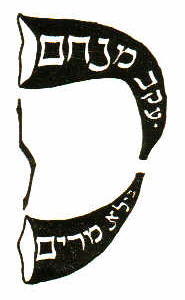
39 Upper shofar: Yitschak Menachem; lower shofar: Biela Miriam. The mouths of the shofars appear to be joined by a lamed. |
||||||||||||
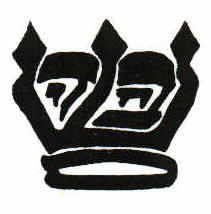
40 Beth chet, dalet yud, shin. The loop at the base might be a samech or a final mem. |
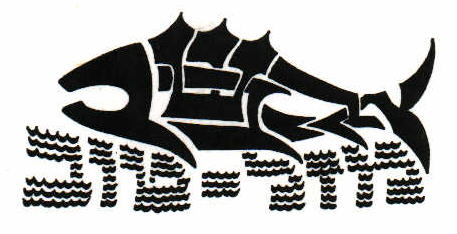
41 The fish contains aleph bet and shin bet. Below, the waves spell out 'mazel tov.' |
||||||||||||

42 Chet, shin, resh, zayin, mem, dalet. It is possible that the dalet plus the stem of the flower represent a kof. |

43 Hei. |
||||||||||||
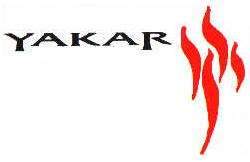
44 Yud, kof, resh. |

45 British Friends of Bar-Ilan University. |
||||||||||||

46 . |
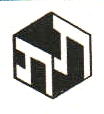
47 Beit HaSefer Torah Temimah. |
||||||||||||

48 From the marriage invitation of Chaim and Rachel-Promt(?). The leaf on the right is a chet for the chatan while on the left two leaves represent resh and pei for the kallah. In the centre are a zayin and a yud. |
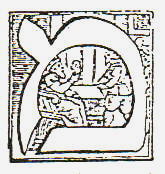
49 Kestenbaum & Co., New York, auctioneers of rare books and manuscripts. The image appears to have been copied from an old Haggadah. There are three different mem images. The mems, which illustrate the text, stand for matza, maror and ma nishtanah. The person seated at the left side of the table is holding a matza |
||||||||||||
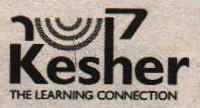
50 Kof, a menorah doubling as a shin, resh. |
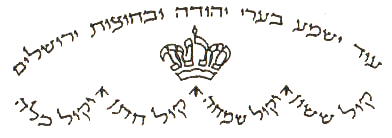
51 The crown contains the words 'mazel tov.' |
||||||||||||
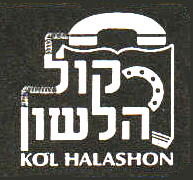
52 Kol Halashon |

53 Limmud: the lamed serves both as a Hebrew character and a Latin character. |
||||||||||||

54 {Hei lamed lamed} = Hillel. Wolfson Hillel Primary School, London. |
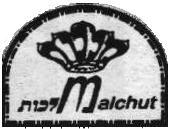
55 {mem nun tes chet} form the crown. Below, the mem in malchut tries unsuccessfully to be both a Hebrew character and a Latin character. Source: Hamoedia, 10 Sep 1999, page 12. |
||||||||||||

56 {beth lamed lamed}: Bank Leumi Source: London Jewish News, 6 Aug 1999, page 18. |
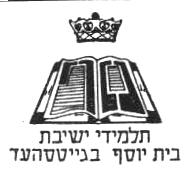
57 This design appears to have no alphabetic content. The central black areas are commentary columns. Source: Jewish Tribune, 2 Sep 1999, page 5. |
||||||||||||
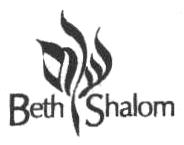
58 {shin, lamed, cholem, mem sofit} Source: Jewish Chronicle, 25 Jun 1999, p19. |

59 {pei,aleph,hei,kof} Source: benscher |
||||||||||||
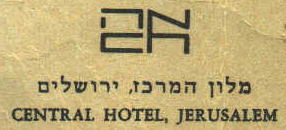
60 An interesting example of combined Hebrew 'cursive'(mem,hei) and Latin characters (C,H). Source: Birchat Hamazon, published by the Central Hotel for simchas, etc. |
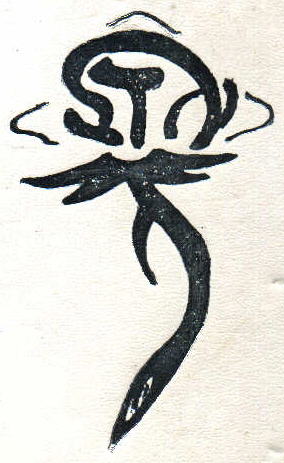
61 Source: benscher |
||||||||||||

62 {nun,shin} with tagin. Source: benscher |
|||||||||||||

63 Degel Yerushalaim Source: benscher |
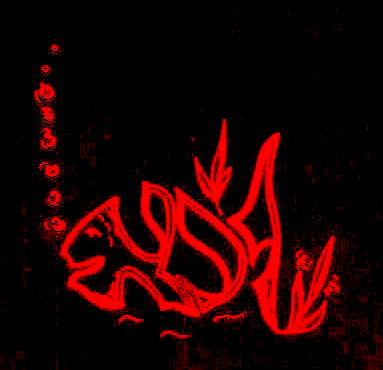
64 An alphabet fish spouting bubbles for the chuppah of Rachel (resh) and Arje (aleph). the significance of the first letter is unclear. Source: benscher |
||||||||||||
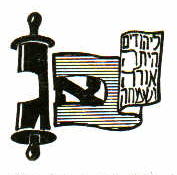
65 Source: benscher. |
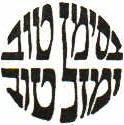
66 B'siman tov v'mazel tov. The lamed and the nun sofit are joined. |
||||||||||||
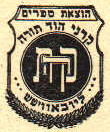
67 Kof,hei,tav. Source: benscher. |
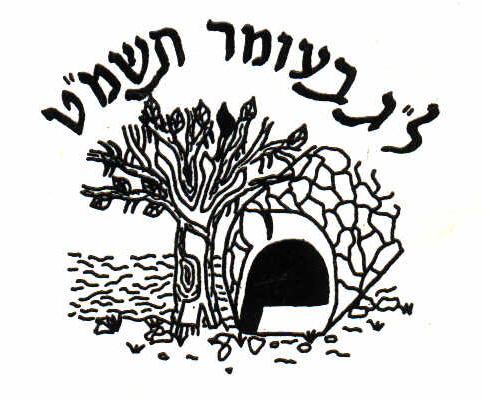
68 Mem,shin,gimel. A yud or a zayin may perhaps be hidden amongst the foliage at the top of the tree. Source: benscher. |
||||||||||||
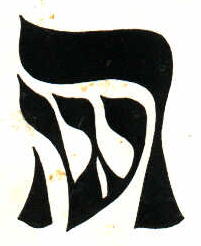
69 Shin,hei Source: benscher. |
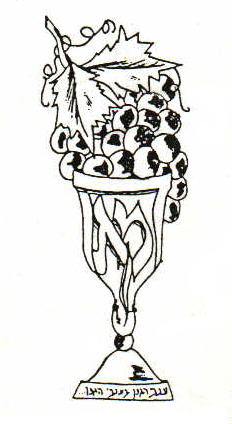
70 aleph,chet,mem. The mem and the aleph share a yud. The design might also contain a beth and a kof. Source: benscher. |
||||||||||||
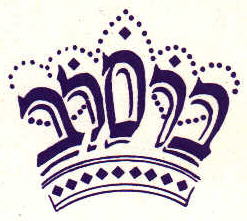
71 Breslov |
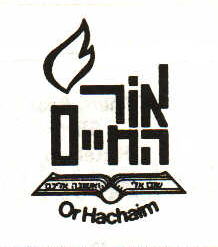
72 Or HaChaim |
||||||||||||
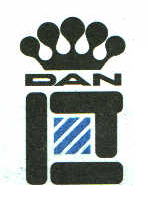
73 Dan Hotels, Israel. The dalet is easy to recognise and possibly the left-vertical and the bottom-horizontal blocks, together with the dalet, form a cryptic mem (malon=hotel). Source: Jewish Chronicle, 1 Oct 1999, page 9. |

74 Another Latin m combined awkwardly with a Hebrew mem. (see item 55, above) Miller Publishers, 8 Habakuk Street, Jerusalem. Source: Hamodia, 10 Sep 1999, p11. |
||||||||||||
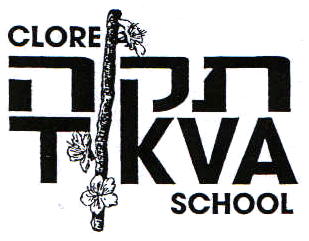
75 Clore School. The three-flowered twig, with fortunate alignment, acts as a vav in the Hebrew word and an i in the transliteration. |
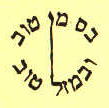
76 The spacing of the letters of b'siman is confusing. |
||||||||||||
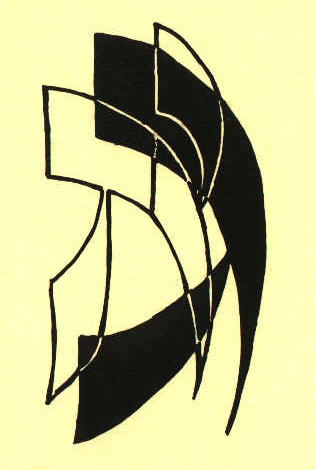
77 {aleph,zayin,gimel} |

78 |
||||||||||||
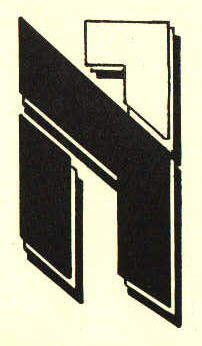
79 |
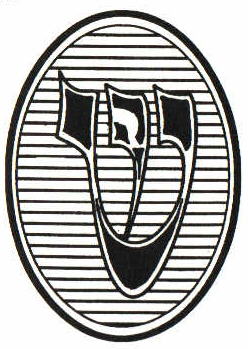
80 |
||||||||||||
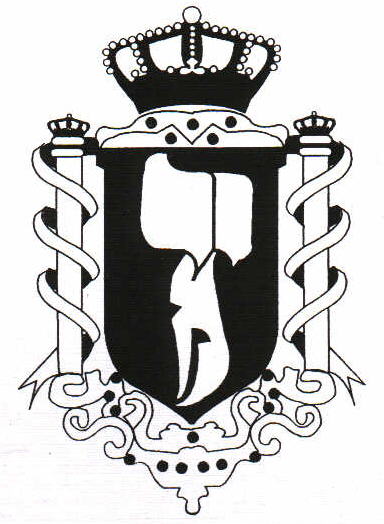
81 |
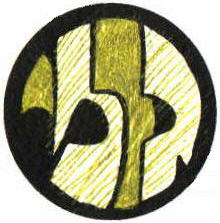
82 |
||||||||||||
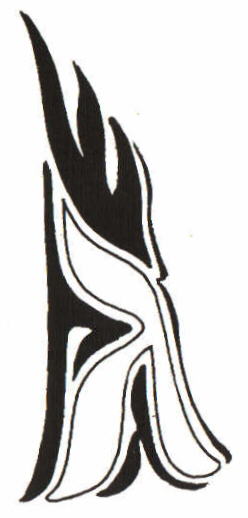
83 |
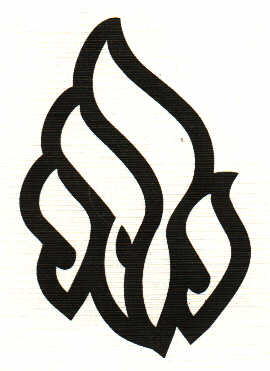
84 {yud,resh} and {yud,dalet} |
||||||||||||
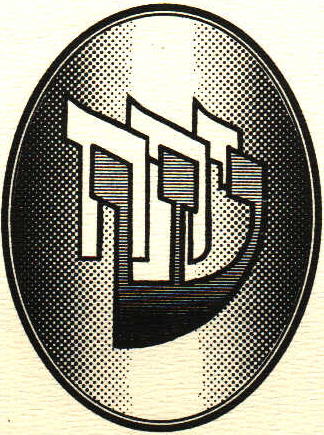
85 |
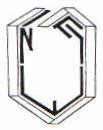
86 |
||||||||||||
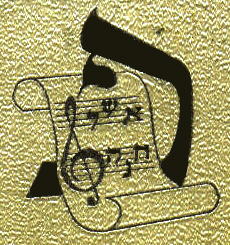
87 From the wedding invitation of Asher and Chana F. |

88 Masorti Academy, London, U.K. Source: Jewish Chronicle, 8 Oct 1999, p13.
|
||||||||||||
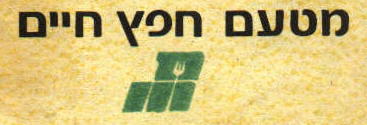
89 |
90 blank |
||||||||||||
|
|||||||||||||
|
| Click here for | exit | top Alphabet Tablets Magen Davids Menorahs end |
The Tablets Of The Law
According to the Encyclopedia of Jewish Symbols (ISBN 0-87668-594-7),
art historians have suggested that the familiar depiction of the
tablets - two attached rectangular slabs with rounded tops - is
the creation of early Christian artists. Ancient Jewish descriptions
depict the tablets as cubes or even two joined hands. (Song of Songs
Rabbah 5:14,1.)"
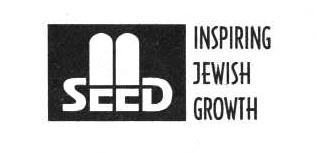
1 Project SEED Source: Jewish Tribune, 7 Oct 1999, page 4. |
blank |
| Click here for | exit | top Alphabet Tablets Magen Davids Menorahs end |
Magen Davids
The Magen David is often adapted in imaginative ways.
Here are a few.
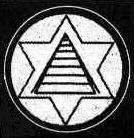
1 Mesila, Jerusalem. Source: Hamoedia, 10 Sep 1999, page 12. |

2 Source: London Jewish News, 6 Aug 1999, page 2. |
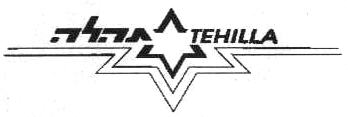
3 Tehilla Source: London Jewish News, 6 Aug 1999, page 2. |
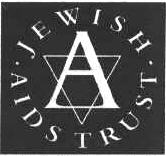
4 Jewish AIDS Trust Source: London Jewish News, 6 Aug 1999, page 10. |
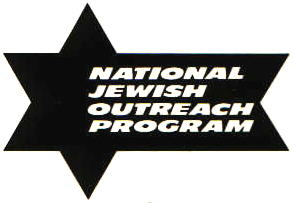
5 National Jewish Outreach Program. http://www.njop.org |

6 Shaare Zedek Medical Centre, Jerusalem. Source: Jewish Chronicle, 17 Sep 1999. |


7 Source: UJIA advertising leaflet. |

8 Jewish Chronicle "Take The Pulse Every Friday" Source: Jewish Chronicle, 6 Aug 1999, p43. |
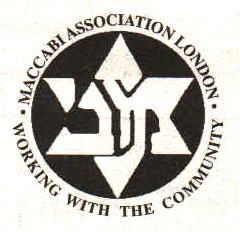
9 Maccabi Association, London. Source: London Jewish News, 1 Oct 1999, page 4. |

10 The text reads "Promotion until December. Whisky, Gin, Rums, Vodka. £6 Bottle." I don't like this way of using a Magen Dovid in an advertisement. Source: London Jewish News, 1 Oct 1999, page ii. |
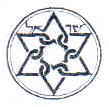
11 Sarel 2000 Source: Jewish Chronicle, 24 Sep 1999, page 4. |
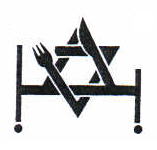
12 Hospital Kosher Meals Service, U.K. hkms@compuserve.com |
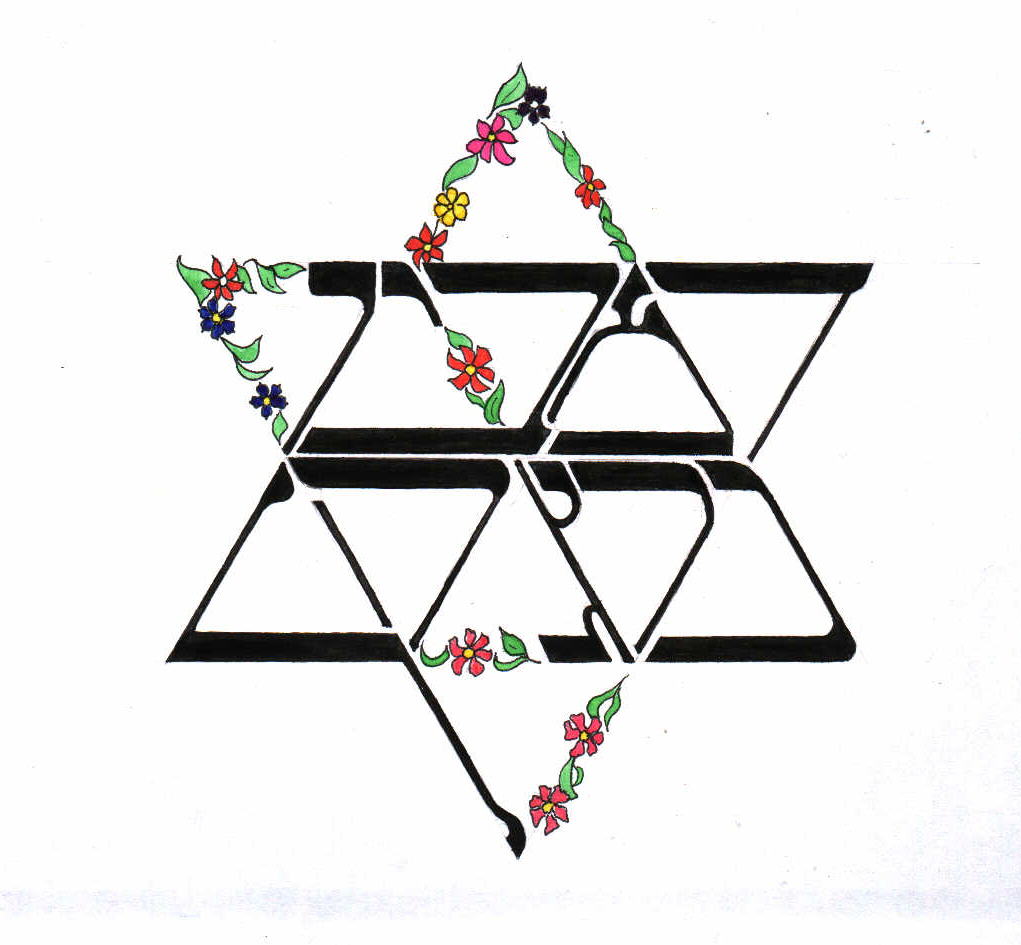
13 |
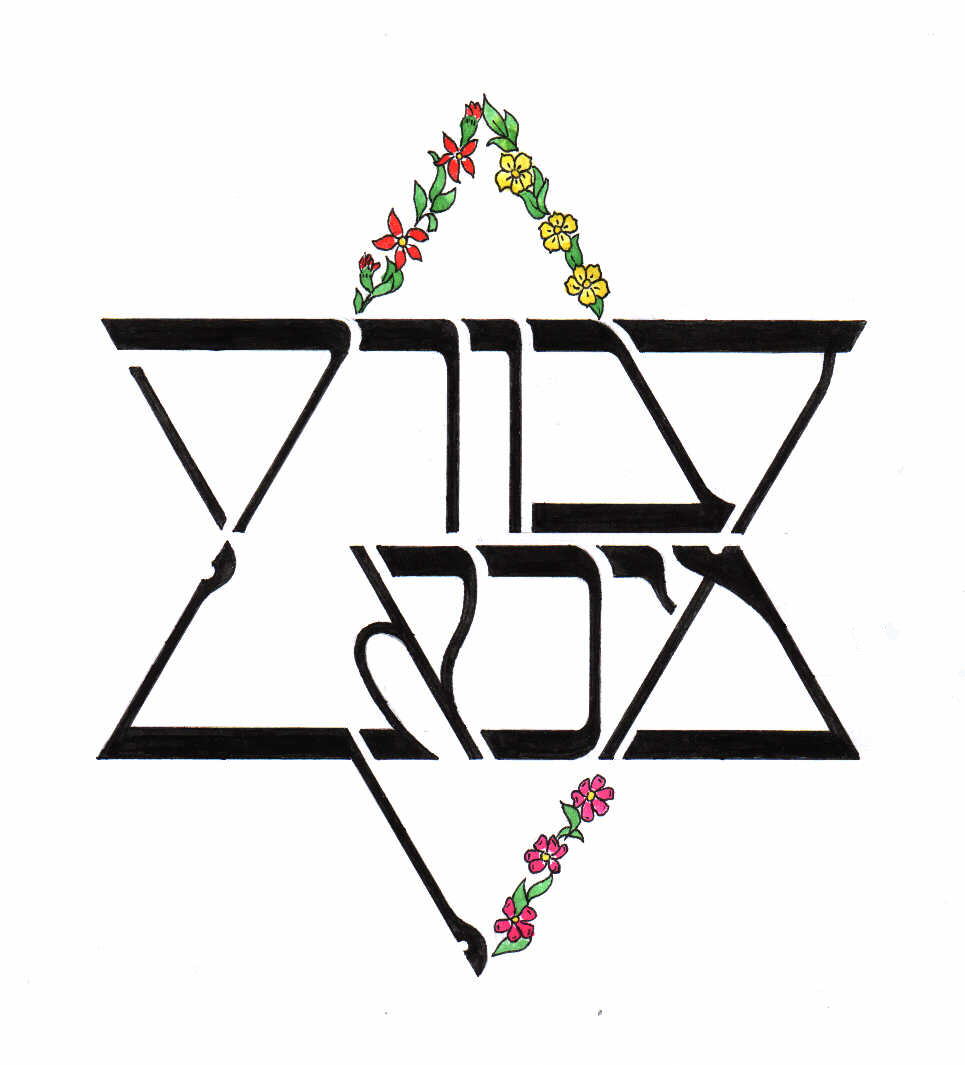
14 |
| Click here for | exit | top Alphabet Tablets Magen Davids Menorahs end |
Menorahs
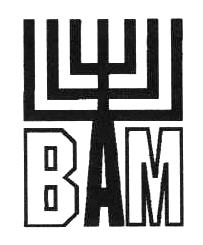
1 . Source: London Jewish News, 6 Aug 1999, page 2. |
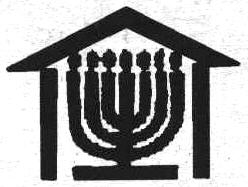
2 Bnai Brith JBG Housing Association. Source: London Jewish News, 6 Aug 1999, page 26. |

3 New Whetstone Synagogue, London N20. This is the first five-branch menorah which I have seen. Candles two and four form the letter 'N' whilst candles one, three and five form the letter 'W.' Source: Jewish Chronicle, 3 Sep 1999, page 59. |
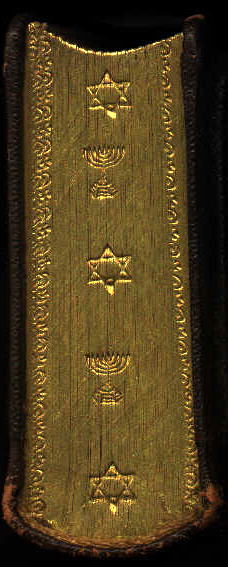
5 Menorahs and Magen Davids in an unexpected place. These are stamped into the gilded page edges of a pocket Tenach published by 'Sinai' Publishing Co. of Tel-Aviv. All three sides are gilded and stamped. The size of the Tenach is 93mm W x 120mm H x 40mm T. |
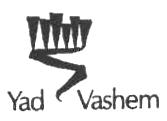
4 A six-branch menorah. With a little imagination the first candle becomes a vov, the next three a shin and the final two a mem sofit, thus spelling "Vashem." Source: Jewish Chronicle, 25 Jun 1999, p19. |
| Click here for | exit | top Alphabet Tablets Magen Davids Menorahs end |
